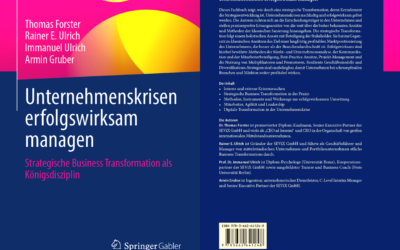A company's business strategy as well as external developments such as geopolitical trends, special situation due to the Corona pandemic, lead to location challenges with regard to the creation or reduction of new locations. To determine the right location strategy, which must be consistent with business strategy, companies need to apply a strategic approach to these challenges.
However, in the current global environment, uncertainty is a given. Geopolitical turbulence, technological developments, labor market challenges, changes in the tax climate, etc. all impact the cost efficiency, quality of the business environment and risk profile of current locations. But these challenges also make it complex to determine the optimal location strategy for the future. Do we need to be closer to the markets? Can we continue to consolidate into a truly global structure? Do we need to regionalize or even localize? A thorough process to determine the optimal location strategy is therefore critical.
The consequences of the Corona pandemic for the real economy
This is not the only reason why Corona is asking more fundamental questions and is now forcing rapid action, which was still refused or blocked by management or stakeholders before the crisis. Successful business models and strategies of the past will prove to be no longer competitive and sustainable. International competitiveness is at stake. Through accelerated transformation processes, companies will have to face the requirements of a strategic business transformation head-on. Those that refuse a competitive strategy development process and continue to rely on old business models will fail. In a strategic business transformation with the goal of a new competitive business model, all structures, processes, resources and activities must be put to the test - including all company sites. In the past, many location decisions were not justified by essential strategic considerations, convincing country concepts, location success calculations, analytical evaluations or investment calculations. They were often made as a gut decision, especially in medium-sized companies, because the competition was there too, and then turned out to be expensive bad investments.
The consequences of Corona for the real economy are slowly emerging, but should become increasingly clear in the coming months. Many experts are now expressing the opinion that globalization and the associated development of the expansion of international company locations has reached its limits as a result of Corona. Some already believe in the reversal of locations and expect a high proportion of insourcing to fill the company's own workforce. Corona, at least, is already showing that there are serious problems with the supply of key production parts. With the loss of suppliers and the disruption of supply chains as well as the dependence on basic materials for the pharmaceutical and biotech industry from abroad, scherpunktmäßig from China and India, Corona also proved to be a clear supply and location problem. The division of labor in current internationalized value chains obviously no longer functions smoothly and must be completely questioned. In the future, therefore, other location factors are likely to be given greater consideration in site selection. Supply reliability and efficiency are likely to be given higher weightings than pure cost advantages, growth or market penetration factors, and not only in a location success or investment calculation in a decision matrix.
Every choice of a location is an essential part of a company's overall strategy or diversification strategy and must be integrated into a new strategy development process. Please have a look at the videos on the SEViX website. Besides the basic strategic orientation with answers to define a clear strategy considering and evaluating terms like internationalization, cost leadership, differentiation, technology and innovation leadership or concentration on niches, the location strategy to be integrated depends on the following key questions and the actual starting point: which activities should be implemented at which location and for which reason.
"A constant emergence and decay in an unstable system" is how SEViX founder Rainer E. Ulrich briefly but comprehensively describes the global economic order in the introduction on page 10 of the SEViX book "Enterprise Value Enhancement - Business Transformation as an Opportunity". The business models of companies must meet the requirement of resilience in order to secure the future. Corona - as a strong catalyst of change - will lead in resilient business models to fundamentally question locations, to try performance improvements everywhere, either to reduce locations or to consolidate the company with a fundamental reduction of capacities.
Key to Success
Geopolitical turbulence, technological developments, labor market challenges, changes in the tax climate, etc. all impact the cost efficiency, quality of the business environment and risk profile of current locations. But these challenges also make it complex to determine the optimal location strategy for the future. Do we need to be closer to the markets? Can we continue to consolidate into a truly global structure? Do we need to regionalize or even localize? A thorough process to determine the optimal location strategy is therefore critical.
Location strategies and location decisions are complex processes.
In the actual site selection and site evaluation, it is particularly important to consider the site factors. The location factors are the decision factors that are used for the right site selection depending on the company strategy developed. There are a variety of location factors, each of which must be evaluated and taken into account. Benchmark factors are also always important - what is the competition doing at which location and why is it doing what there? Scenarios and site success calculations must be able to evaluate existing or planned sites against alternatives, taking into account the degrees of target achievement of the site factors.
Conclusion
If, in the current crisis, the respective management is not willing and able to focus on a radical reorientation with a strategic business transformation, including all locations and country concepts, and to start implementing it immediately, a strategy-experienced CEO ad interim can also be the solution.





0 Comments